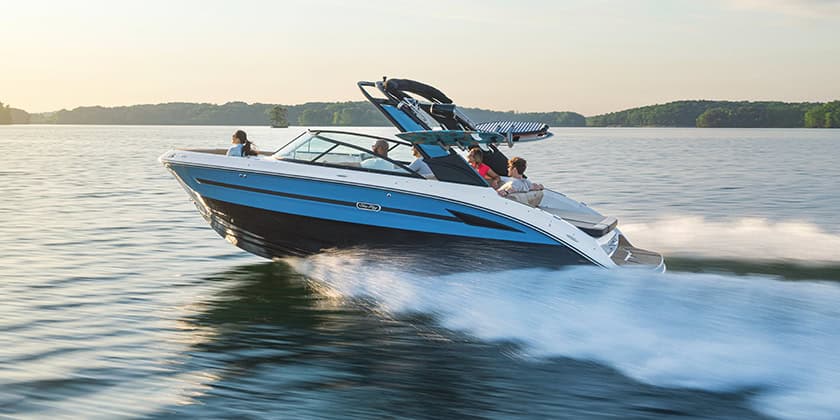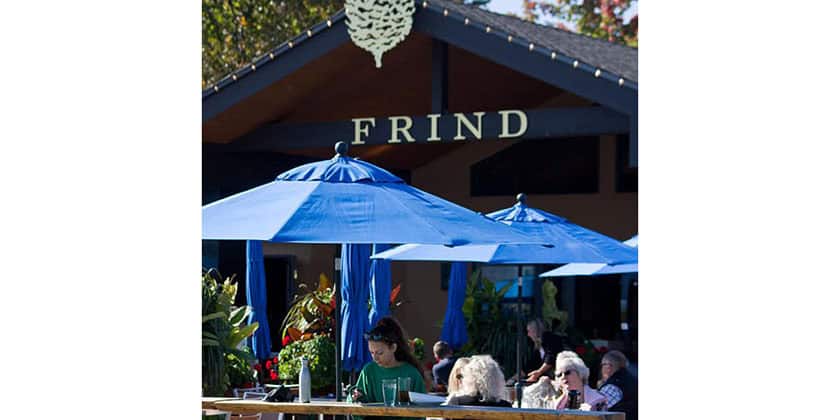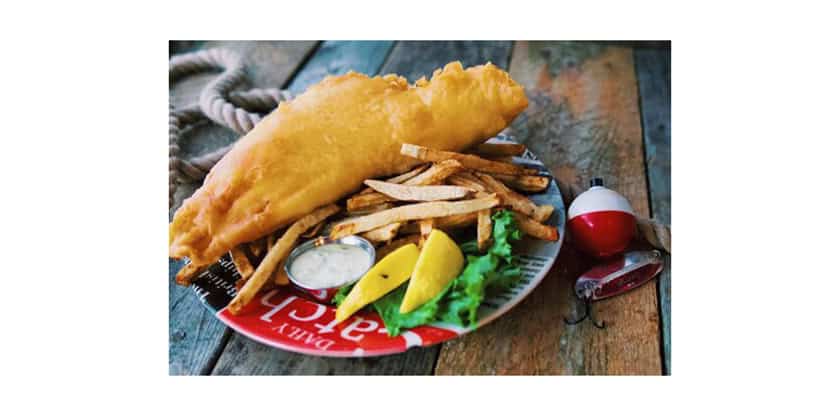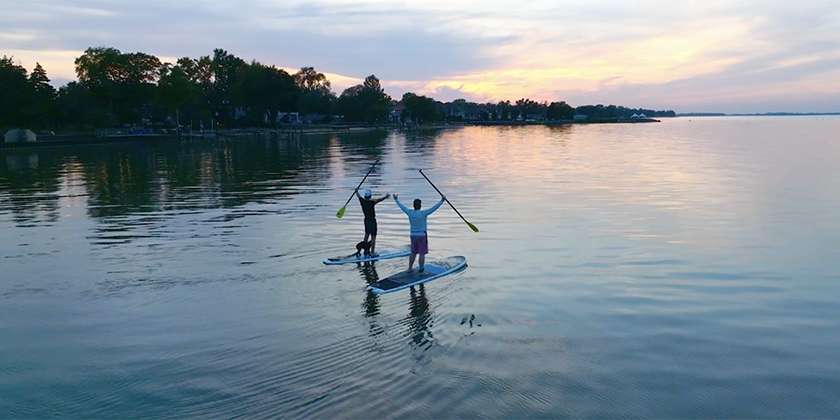CS 33
 By Pat Sturgeon
By Pat Sturgeon
Many people set out to purchase a boat that they can enjoy for a while in their local sailing area and then sometime in the future, to sail off into the sunset. The beauty of such a boat is that when you do set off for some longdistance cruising, you have a vessel that you are completely comfortable with and, if and when you return, you can pick up where you left off.
If this sounds like your master plan, the CS 33 is definitely worth investigating. The CS 33 can give you the light air performance and quick start-up that you need for lake sailing – unlike most offshore boats, the CS 33 is not a heavy-displacement, full-keel slug that needs 15 to 20 knots of breeze to get going – but it still has the qualities and hull shape of a safe, seakindly vessel when you venture offshore.
The CS 33 was designed by Ray Wall while he was working as the CS Yachts in-house designer and was modelled after the CS 36 (not to be confused with the CS 36 Merlin). CS Yachts Ltd. enjoyed great success with the CS 36 since its release in 1979, but it was a bit pricey for the market in 1981, so owner Paul Tennyson was looking for a boat that would be more affordable and would fill the gap between the popular CS 27 and the CS 36. With the lines essentially drawn, the task was fairly easy, and CS Yachts started to pump out CS 33s at a tremendous rate, producing almost 450 boats before the moulds were destroyed in 1987.
Construction
Hand-laid, solid laminate hulls with fibreglass, box-beam floor members supporting the keel and hull are common construction features of CS Yachts. The hull-deck joint is through-bolted with an anodized aluminum toerail and butyl tape between each layer of flanges. This butyl tape oozes continually and needs to be cleaned off annually, but it is an effective method of sealing the joint. All bulkheads in the CS 33 are walk-through and fibreglassed to the hull and deck all the way around. The CS 33 has a shallow bilge sump, but it is deep enough to collect any bilge water and, more importantly, it spreads the load from the keel evenly to the rest of the hull in the case of a severe grounding.
The hull shape itself is what makes the CS 33 very seakindly. It has a deepchested shape forward of the keel extending right to the bow that smoothes entry in choppy seas. The bow stem angle is quite low, allowing the boat to cut through waves without throwing water back into the cockpit.
The keel is a high-aspect, externally bolted lead appendage. It is attached through almost two inches of solid fibreglass in the bilge. Unfortunately, although the high-aspect keel does improve performance, it also causes problems if you run aground, as there is very little give and the shock is transferred right into the hull and floor grid. I have seen cases where the floor member will fracture if you hit a rock at a good clip, and the repair can cost as much as $5,000.
The rudder is hollow, with two stainless-steel bars jutting out from the lower part of the shaft. It is hung on a partial skeg and has a gudgeon and pintle attachment at the skeg. This design allows the lower third of the rudder to snap off if it is hit, thereby maintaining steerage even after such a disaster. Because the rudder is hollow, and because fibreglass that is bonded to stainless steel is not water tight, the CS 33 rudders fill with water. This becomes a problem in northern climates when the boat is stored out of the water and the water trapped inside the rudder freezes. However, rudder damage can be avoided by drilling a small hole in the bottom of the rudder in the fall and plugging it with a screw in the spring before launch.
Down below
Below decks, the CS 33 offers ample storage and true living comfort. CS uses a combination of fibreglass modules, aluminum trim, stainless supports, wicker and light vinyl to give the inside an airy look with attractive detailing.
The V-berth is 6’6″ long with plenty of width. Storage is available in suedecovered fibreglass compartments directly above on each side and in dry bins underneath the V-berth. There are also sliding drawers made from solid ash with teak faces. Forward of the Vberth is a small fo’c’sle or storage compartment directly beneath the anchor locker. This can also be used for chain storage if you put a hawser pipe in the bottom of the anchor well; Wall designed the CS 33 so that it could carry the full weight of all chain ground tackle in the bow of the boat and still sit on its marks.
Moving aft, you pass through a small walkway and on the port side is a full-sized hanging locker that is lined with aromatic cedar. The door of the hanging locker doubles as a companionway door for the forward cabin and across from the hanging locker is the head compartment. The shower was offered as an option, but teak was not used in any of the CS 33 heads thereby keeping maintenance to a minimum.
The standard CS 33 came with large fixed windows, a sliding Lexan main hatch, and another overhead hatch in the middle, so the main saloon is very bright with ample ventilation. Ventilation was improved in 1982 when the company began offering opening ports with bug screens.
CS 33 buyers could choose either a fixed table with bottle storage in the middle and wings on each side, or a fold-up table. Each has its advantages, but I prefer the fixed table for offshore use, as it makes a good handhold down below and is a sturdier design. The starboard settee folds out to become a large double berth over 6’4″ long. On the port side, there is a single berth with a footwell leading into the hanging locker. The footwell is a great idea but the average adult is bound to wake up with bruised ankles as the hole is quite small. Above, there are cupboards and shelves on each side. Each cupboard is completely finished inside and out with teak and wicker. The wicker brightens up the interior and provides ventilation for whatever is in the cupboard. The only disadvantage to the detailed finishing inside each cupboard is that it makes access to the deck bolts almost impossible. If you find that you need to service this area, I suggest cutting out the inside top of the cupboards and installing a quarter-inch teak replacement panel later.
The U-shaped galley comes standard with a two-burner propane stove with oven, a deep sink and pressure water (hot water along with the shower is an option). Above the stove there is ample cupboard space with Lexan sliding doors, so you can see what you have in inventory. There is a deep dry goods locker with a cutting board for a lid and a cupboard beneath a long drawer for cutlery.
The 6.3-cubic-foot ice box is big enough to accommodate a refrigeration unit with a deep freeze. The tankage on the CS 33 is high for a boat of this size, with 35 gallons of fresh water, but most CS 33 buyers opted to increase the fresh water tankage to 70 gallons, which requires a tank under each settee. The holding tank is 32 gallons, and the CS 33 carries a little over 20 gallons of fuel.
Continuing aft on the starboard side, there is a full-sized chart table and large navigation station that incorporates a wet hanging locker beside it. Miscellaneous storage in this area is immense: there is plenty of room under the chart table to add a shelf and dry bin storage under the navigator’s seat.
CS offered a quarter berth version of the CS 33, but only produced about 15 of them. The quarter berth version has the same size chart table, but it is turned around to allow for a footwell for the double berth in the main saloon. The quarter berth is an ample sleeping quarters for one adult.
Engine
All except maybe five CS 33s have the two-horsepower Bukh diesel from Denmark. The Bukh is a great engine with the largest flywheel I have ever seen on a 20-horsepower diesel. This is what makes it run so smooth. I have heard of some problems with the Bukh after the boat has been in salt water. Keep in mind that the Bukh is a rawwater cooled engine and should be flushed with fresh water regularly in a salt water environment.
Topsides
CS always used stainless steel instead of wood above decks, which is a popular feature with owners who don’t like a lot of maintenance. Since clutches were not around when the boat was designed, the lines are all led aft through sheet stoppers. The traveler is mounted on the coach house, which allows for full dodgers and enclosures while sailing. The foredeck is adequate for a 33-footer, and the anchor well is deep enough to carry one large, plowtype anchor and one small Danforth. The bow casting incorporates a bow roller as well. The deck is easy to get around since the coach house is flat and the side decks are wide, and the long and deep cockpit’s high coamings make the boat comfortable and dry. There are deep lockers in the cockpit to house the batteries and charger.
Rigging
The CS 33 uses quarter-inch 1X19 stainless steel wire for mast support. I find that the CS 33 is a difficult boat to tune properly because the shrouds are all in lines, and instead of aft and forward lower shrouds, there is a baby stay to keep the mast from pumping in a chop. When tensioning the rig, it is hard to keep the mast in column. I find many boat owners with baby stays use them to induce mast bend, which is a big mistake. Unless a boat is specifically designed to use a baby stay to bend the mast, you risk lifting the deck up if you over-tension it.
If you are going offshore, I suggest you rig adjustable and removable running backstays from the spreader roots to stabilize the mast in heavy weather. The boom is sheeted to the coach house via a long mainsheet, which goes all the way forward to the goose neck and then back to a winch on the coach house. This arrangement works great for the cruiser but I have seen many racers convert this to a straight block system at the traveler. The boom has room for three reef lines and incorporates a fourto-one outhaul inside the extrusion.
Sailing
The CS 33 is a great all-around performer. Its high-aspect rig configuration, combined with a high-aspect keel, helps the CS 33 claw to weather efficiently, and down wind the centre of effort is well aft, giving the helmsperson good control of the vessel. With its high ballast-to-displacement ratio of 43 percent, the boat is stiff and comes to life in heavy weather. The CS 33 is not a racer, but rather a performance cruiser. However, there are many CS 33s outfitted strictly for racing and they seem to do fine on the race course. The boat is easy to handle and the large cockpit gives everyone room to play.
The CS 33 is an excellent example of CS’s commitment to quality. Most CS 33s range from $52,000 up to $62,000, depending on year and equipment. I find that if there is one feature about the CS 33 that disappoints people, it is the lack of space it offers down below in comparison with vessels designed in the late 80s, which carry their beam well aft. Nonetheless, if you are looking for a seaworthy boat that will stand the test of time, then the CS 33 fits the bill.
Originally published in Canadian Yachting’s winter 1999 issue.






















